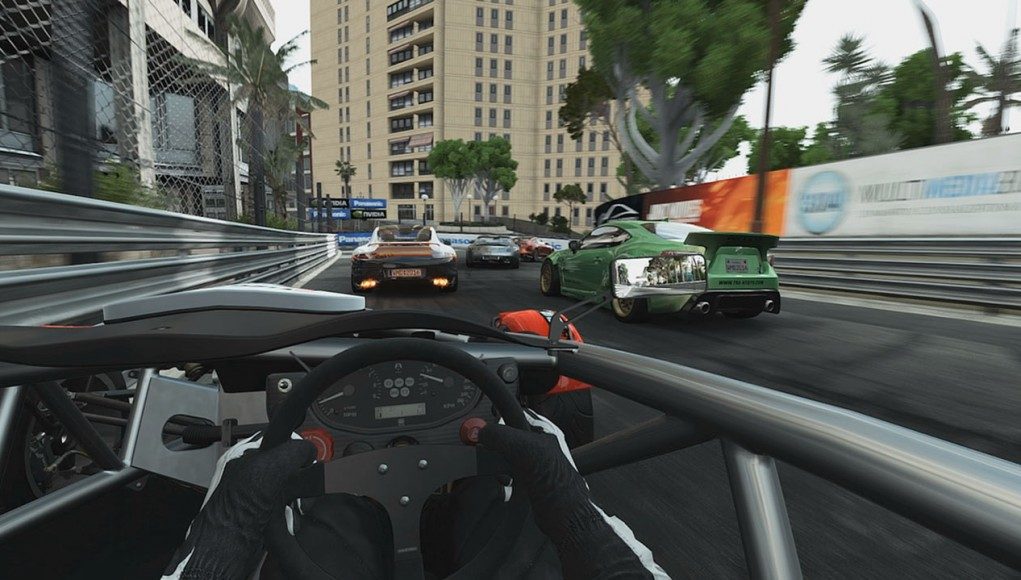 Slightly Mad Studios been making racing games for the past 10 years, and they raised over $3 million dollars in crowd-funding to produce their own racing game called Project CARS. It’s a AAA racing simulation game that was first released in May 2015, and they recently added VR support to be one of the 30 Oculus Rift launch titles. I had a chance to catch up with creative director Andy Tudor and game director Stephen Viljoen at the Oculus Game Days to learn more about the extent that they’ve modeled the cars, tracks, physics, and dynamic weather systems in their goal towards creating the most authentic racing simulation.
Slightly Mad Studios been making racing games for the past 10 years, and they raised over $3 million dollars in crowd-funding to produce their own racing game called Project CARS. It’s a AAA racing simulation game that was first released in May 2015, and they recently added VR support to be one of the 30 Oculus Rift launch titles. I had a chance to catch up with creative director Andy Tudor and game director Stephen Viljoen at the Oculus Game Days to learn more about the extent that they’ve modeled the cars, tracks, physics, and dynamic weather systems in their goal towards creating the most authentic racing simulation.
LISTEN TO THE VOICES OF VR PODCAST
Audio PlayerThe VR support allows you to be fully immersed within a variety of different types of cars ranging from Indy cars, open wheel cars, track day cars, road cars, and karts. With VR you have full situational awareness in that you can see cars in your mirrors, you really get to feel the size and perspective of your car, and you can feel the full ambiance of each of the 35 unique locations and 110 different track layouts.
Stephen and Andy emphasized the extent to which they’ve gone in order to model how the grip of the tires change as they wear down, incorporating realistic sound field recordings, recreating actual tracks, creating physics simulations that take into account the atmospheric temperature and weight of the cars, and even factoring in a fully dynamic weather system and how the light changes throughout the day.
They claim that their simulation is accurate enough that there are actual race car drivers who use Project CARS to practice on different tracks, and here’s a video of Carmen Jorda using Project CARS in a racing simulator using three different 4K monitors.
The comfort rating for Project CARS is rated as intense, and I did experience some motion sickness from the brief time that I played the game. I am really sensitive to simulator sickness and there are some things in Project CARS that trigger it for me such as tilting the horizon line when going on a banked curve, suddenly stopping when crashing, or going up or down hills. All of these produce a disconnect between my visual and vestibular systems, and start to make me feel a little nauseous.
They do use a cockpit which helps to reduce vection, but the dense textures on the tracks still produce enough optical flow to potentially be another trigger for some people. This would be a difficult VR experience for me personally to play for an extended length of time, and so just be aware if you know that you’re susceptible to simulator sickness from VR locomotion. But if you’re not, then this is bound to be an intense racing experience — especially with the multiplayer mode.
There are also a lot of motion platform integrations that Project CARS has available, and so I imagine that incorporating more of the 4D haptic feedback and movements could actually make this an even more immersive and potentially more comfortable experience. I expect to see a lot of digital out of home entertainment arcades playing this game with a steering wheel, pedals, and a fully integrated motion platform.
Project CARS is being released on March 28th, and sells for $49.99
Become a Patron! Support The Voices of VR Podcast Patreon
Theme music: “Fatality” by Tigoolio







